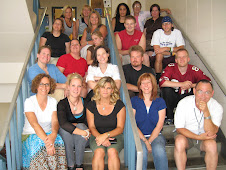I wasn't even interested in reading the Breakthroughs chapter "Let's Take Another Look at the Fish" until I saw it listed under the theme of Writing Across the Curriculum in the alternative list of contents, Another Way to Use This Book, in the Preface.
I was intrigued that this chapter was written by a science teacher. My writing center staff and I have put in a request to present a workshop to the entire C of O faculty at the beginning of the fall 2008-2009 semester. I particularly want to reach teachers (like the science faculty) who generally avoid sending their students to the Center for Writing and Thinking (CWT). The proposed topic of our workshop is How to Incorporate the Writing Center into Your Classes--or something to that effect.
I love the aphorism "A pencil is one of the best eyes." (For some reason, it reminds me of Zen and the Art of Motorcycle Maintenance.) I also agree with Agassiz's approach to teaching--teachers being facilitators of learning. He was patient--which is what teachers of writing need to be in order to teach the process effectively. Too many teachers are in a hurry to get an essay graded and another assigned.
I have often wanted to teach grammar employing this method, but who has the luxury of letting students "look at a fish" for three days? Especially public school teachers who must teach the standards and The Test.
Agassiz's approach to teaching is the foundation of the writing center method. We, like Agassiz, don't "give students facts": we ask questions. Like Tierney, we "talk to the student" and "coach each student, one on one," using questions that--as one of my writing assistants so aptly describes it--"get students thinking about their papers."
I think I can use these ideas in our upcoming faculty workshop to draw in the science teachers , to help them understand how the writing center can support their teaching and benefit their students.
Friday, May 30, 2008
Subscribe to:
Post Comments (Atom)








1 comment:
I liked the fish essay also...
At the Urban Sites Network Annual Conference, a high school science teacher described ways in which she incorporated writing into the science classroom.
In one exercise, students applied Newton's laws to describe the forces in their own lives...how we continue on the same path until acted upon by an life experience that shifts our path, etc...
In another activity, students created travel brochures for elements on the periodic tables... who knew Barium could be so exciting?
Post a Comment